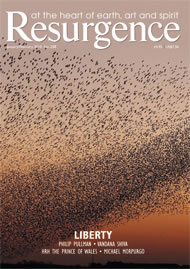When news broke that the environmental magazine the Ecologist was to go online only, editor Zac Goldsmith said, “Online, our potential readership is limitless… We can launch campaigns and see immediate results.” Fair enough, but it is ironic that the decision to publish an environmental magazine online could actually have negative ecological impacts.
Until recently the energy demands of the infrastructure needed to service electronic media haven’t been questioned, much less quantified, but as carbon calculators become more effective and industry-specific, all this is changing. It is estimated that half the UK’s energy requirements could be needed to drive computers in the next ten years. Indeed, Google, a mega-corporation and voracious consumer of energy, has a data centre in Oregon, USA which, it is alleged, will use as much energy as the entire city of Newcastle when it comes online in 2011.
Because we can’t see the environmental impacts of computer technology, we tend to assume there are none, but the new initiative Two Sides aims to raise awareness of the hidden costs to the environment of computer technology and to dispel the myths that besiege the medium of print.
Martyn Eustace, Director of TwoSides, believes “there is a common misconception that making and using paper is bad for the environment”. In fact, the print industry has cleaned up its act to such an extent that CO2 emissions per tonne of paper produced have been cut by 35.8% since 1990, and the European paper industry fully supports the conservation and enhancement of biodiversity.
Two Sides aims to correct the common misconceptions that paper products have a high carbon footprint and consume vast amounts of energy. “Our challenge is to present a simple, understandable message that print and paper products can be far more sustainable than the equivalent electronic version,” Eustace says. “There’s recent research to suggest that producing and reading a traditional newspaper can consume 20% less energy than reading news online for more than thirty minutes.”
Eustace is keen to point out that Two Sides is not anti-technology. “Of course we recognise how important the IT revolution is,” he says. “The argument is not about what is more effective: it is about the misconception that electronic media is better for the environment.”
As part of its three-year campaign, Two Sides will also undertake research into how people interact with print and paper as opposed to a computer screen – including the way children learn. Initial findings suggest that people retain information better from a printed document than from screen-based learning.
This new initiative by Two Sides offers a forum for a broader discussion about the environmental improvements that can be made in both the print and the IT sectors. Ultimately, people need balanced information with which to make their decisions. As the climate debate strengthens and carbon footprinting is on everyone’s agenda, knowing the impact of sending an email with massive attachments, as opposed to printing and posting the same, is important. Ethical consumers need this information to base their decisions on.
As with all things, there are two sides to every story: internet technology is a wonderful thing – but it has a considerable environmental impact. The print and paper industry is positioning itself to offer sustainable alternatives.







